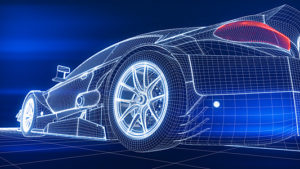\”

Back in January, New York Sen. Terrence Murphy introduced an act called Evan\’s law to the Senate. The law would allow police officers responding to a car accident to ask for access to the involved parties\’ phones. Then the officer would use a device to determine if the phones played a role in distracting the drivers.
The act is named after Evan Lieberman, who lost his life in a 2011 collision. Evan\’s father, Ben Lieberman, filed a civil lawsuit and subpoenaed the phone records for the driver responsible for the collision. Those records indicated that the driver had been texting while driving just before the crash. Lieberman was shocked to learn that the police had no official protocol to check phones for recent activity after a crash. He then worked with Sen. Murphy to draft the proposed legislation
There\’s plenty of evidence to show that distracted driving is a big problem. According to the Centers for Disease Control and Prevention, 18 percent of all car accidents that resulted in an injury in 2013 also involved a distracted driver. More than 3,000 people died in crashes involving a distracted driver.
So it\’s clear that distracted driving is an issue. Moreover, according to Sen. Murphy\’s proposed legislation, being aware of it isn\’t enough. The act cites the statistic that “67 percent of drivers admit to continued use of their cell phones while driving despite knowledge of the inherent danger to themselves and others on the road.”
It\’s already against the law in New York to use a cell phone or other personal electronic device in your hand while operating a vehicle (the New York government passed laws in 2001 and 2009 covering those scenarios). Drivers are allowed to operate a device in hands-free mode, however.
Enforcing those laws has been a challenge — and that\’s where the new legislation comes in. Under the law, police officers could demand your cell phone if you\’re involved in a car accident in New York that results in damage, personal injury or death.
Once you hand over your phone, the officer will connect it to a gadget manufactured by a company called Cellebrite. The device will scan your phone and alert the officer if you were using your phone leading up to the accident, which would imply you were distracted at the time. It\’s not supposed to be able to give details on what you were doing — your activities would still remain private.
But what if you don\’t hand over the phone? Then the state will suspend your driver\’s license for a period of at least one year (or 18 months if you had previously refused to hand over your phone in the last five years). The act argues that a police officer asking for a field test of your phone is similar to demanding you take a breathalyzer test. In both cases, the act says, the driver has given implied consent.
Sen. Murphy\’s act argues that because the device won\’t analyze or record any specific activity on your phone, the driver\’s Fourth Amendment rights protecting against illegal search and seizure are still safe. But then again, Cellebrite is mostly known as a company that produces electronics capable of reading and storing all smartphone activity. That hardly inspires citizen confidence that data will remain under protection.
It\’s also unclear whether the device could differentiate between hands-on and hands-free smartphone activity. Since it\’s legal in New York to operate a device using hands-free interfaces while driving, that could be a huge problem. Unless there\’s a data tag indicating the device was in hands-free mode, what will stop those accused of driving while distracted from claiming they were using their phones legally? And how will car manufacturers, which have recently focused on creating interfaces for connected cars, react to such legislation?
The whole issue is complicated and messy. It\’s clear that driving while distracted is extremely dangerous. But is it fair to say drivers give their implied consent to police officers asking for their smartphones? And will it ultimately cut back on distracted driving, or will it just give the police an opportunity to enforce a law? Are there better ways to handle the problem? Will driverless cars be the ultimate solution?
The answers to those questions are unknown. In the meantime, keep your hands on the wheel and your eyes on the road. You can answer that text once you\’re safely parked.
Watch the video above to learn more about the bill.












